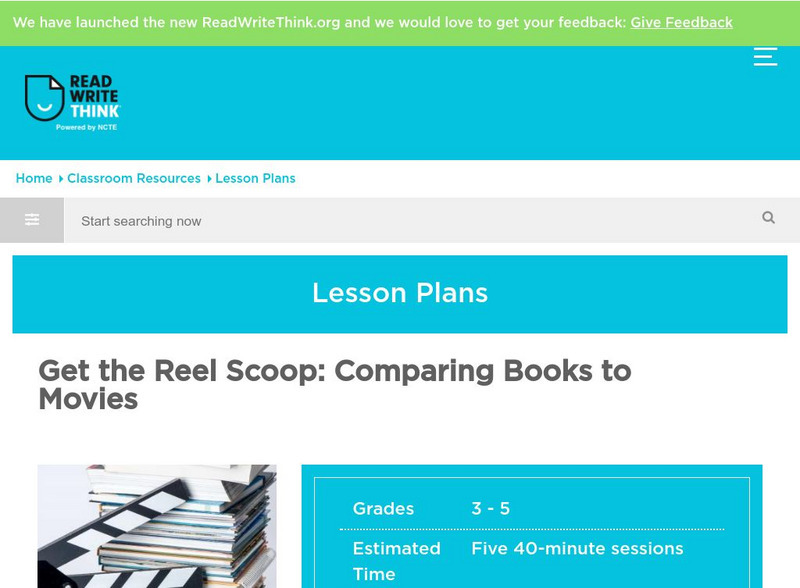Curated OER
The Red Badge of Courage: A New Kind of Courage
Learners provide examples of Crane's treatment of the "manly virtues" associated with war using support from the text of The Red Badge of Courage. They describe the three published endings of The Red Badge of Courage and the difference...
Curated OER
Creating A Different Point Of View
High schoolers explore Indian marriage customs and culture.They connect and compare their own experiences with the experiences of characters from the short story Diamond Dust and rewrite a scene from the story from another point of view.
Curated OER
The Lavendar Llama
Students define and discuss discrimination after listening to the book The Lavender Llama. They color a worksheet from the book.
Curated OER
Let's Put a Spin on Things: Graffiti Role Play
Fourth graders examine what is and what isn't graffiti. They role-play various scenarios, research the Graffiti Hurts website, and discuss when graffiti should be reported to local law enforcement.
Curated OER
Four Kinds of Sentences - Fun Review
Fourth graders review for the Four Kinds of Sentences.
Utah Education Network
Uen: Character Education Read Alouds
This lesson plan engages students in reading comprehension strategies related to Patty Lovell's book, Stand Tall, Molly Lou Melon. Students will participate in listening to other stories with the same message and then will determine the...
Read Works
Read Works: Lesson 1: Actions
In this resource, students will practice identifying and describing the actions of a character. Teachers will model these skills through the use of text and pictures from the story No, David! by David Shannon. Students will then draw a...
Read Works
Read Works: Grade 1: Three Lesson Unit: Character: Actions, Feelings, Looks
[Free Registration/Login Required] A series of three lesson plans, based on David Shannon's books No, David!, David Gets in Trouble, and David Goes to School. Students learn how to utilize text and picture clues to determine and describe...
ReadWriteThink
Read Write Think: Get the Reel Scoop: Comparing Books to Movies
Young scholars compare a book to its film adaptation, and then perform readers theater of a scene from the book that they feel was not well represented in the movie version.
Austin Independent School District
Austin Independent School: 10 Major Types of Inference in Literature [Pdf]
This printable worksheet helps students recognize the difference between an implication and an inference. Students are presented with quotes from the text and they practice with each of the ten types of inference: location, agent, time,...
Curated OER
Mc Graw Hill: Compare Characters' Point of View
Defines and explains how to show how different characters think and feel.
Alabama Learning Exchange
Alex: Getting to Know Characters
In this language development lesson using the books by Kevin Henkes English Language Learners learn vocabulary and language structures to express feelings, make text-to-self connections, and practice the reading strategy of analyzing...
Polk Brothers Foundation Center for Urban Education at DePaul University
De Paul University: Center for Urban Education: Lexington [Pdf]
"Lexington" is a one page, historical fiction, reading passage about soldiers fighting in the Revolutionary War. A soldier describes the feeling of being an American. It is followed by constructed-response questions which require...
Better Lesson
Better Lesson: Speaking and Listening: Collaborative Conversations
Students will partner read The Kite, by Alma Flor Ada. Then work together in small collaborative groups to describe the character of the mother, the children, or the kitten. Included in this lesson are video demonstrations, printable...
Writing Fix
Writing Fix: Other Bad Cases to Write About
After reading A Bad Case of Stripes by David Shannon the writer will plan an original story where an unusual affliction affects a character and is eventually solved. The students will use strong and memorable details as they convey their...











![Austin Independent School: 10 Major Types of Inference in Literature [Pdf] Unknown Type Austin Independent School: 10 Major Types of Inference in Literature [Pdf] Unknown Type](https://d15y2dacu3jp90.cloudfront.net/images/attachment_defaults/resource/large/FPO-knovation.png)



